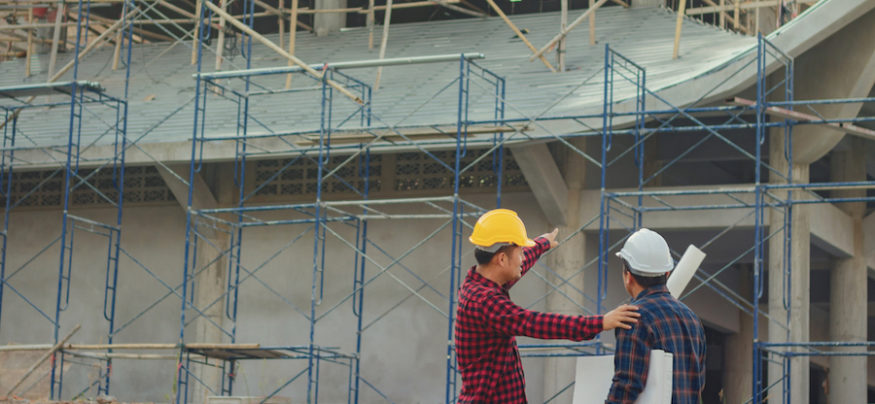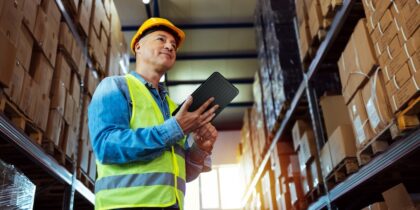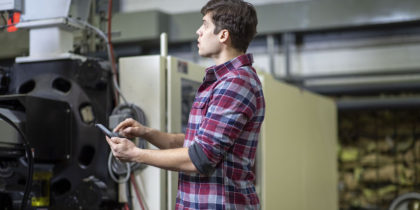The construction industry is no stranger to occupational hazards, and employee safety is the top priority. When it comes to portable and handheld devices, many construction companies have bypassed modern handheld devices in many work areas to manage employee risk. While protected from electrocution, fire and explosion, however, employees and managers have been forced to live without the business benefits of connectivity.
Help is here in the form of intrinsically safe devices that meet Occupational Health and Safety Administration (OSHA) standards and can deliver a multitude of process improvements, making them reliable and beneficial assets in construction risk management.
The Need for Intrinsically Safe Devices
Risk looms large in construction. In 2017, slightly more than 20 percent of the 4,674 worker fatalities in the U.S. private industry were in the construction sector, according to OSHA.
OSHA also reports that effective control of hazardous electrical energy is one of the 10 most frequently violated standards in the industry. Electrocutions count as one of the “Fatal Four” factors for worker fatalities and is an important concern in construction risk management.
Modernize Your Factory With Mobile
Get your free guide to the mobile technologies that will accelerate your smart factory journey. Download Now
Given the high prevalence of unsafe and unpredictable electrical energy fields and conditions that might create danger, industry workers have traditionally worked with materials that are safe and won’t combust in such environments. These include paper blueprints and traditionally ruggedized, clunky computers. Most other equipment in construction falls under the Class I Div 2 category of products that meet OSHA specifications for construction risk management.
Compromised Productivity
Reliance on paper while on site constricts workers’ productivity in a variety of ways.
-
Static information: Blueprints are not updated every day and definitely not in real time. This means workers might not have access to the latest updates to design plans. They have to rely on other employees remembering to record changes accurately and implement them throughout the workflow. Information on paper is also prone to manual error when transcribed and saved over time, as well as to environmental hazards.
-
Paper trail: Construction supervisors and workers have a long list of tasks to attend to daily. Traditionally, they might be outlined on paper in duplicate copies — one for the road, and one for the corporate office. Repeatedly having to refer to a piece of paper while on site can get cumbersome quickly. What’s more, paper can get damaged under everyday environmental conditions, including rain and wind. Relying on paper checklists means a greater probability of workers forgetting to check things off, which can get especially complicated when two or more workers share the same lists. Under intense field conditions, it might not always be easy to keep track of who is doing which task on a paper list. Using paper for the approval process also makes supervisor and other stakeholder signatures more difficult to procure and track.
-
Ineffective communication: Traditional technologies on site do not smoothly facilitate communication among field personnel, managers and the corporate office — which can slow productivity or even bring it to a screeching halt. If a worker encounters a maintenance issue they need assistance with, they can use a Class I Div 2 intrinsically safe smartwatch to quickly reach a manager, who can then troubleshoot with an off-site expert using the watch’s voice capabilities. If a video link is needed, the field worker can utilize AR/smart assist technology via an intrinsically safe tablet (Div 1 or Div 2) to reach an offsite expert. Similarly, if a worker comes across a different machine on the field than what they were trained on, they can access corresponding tutorials or information instantly on the tablet.
Intrinsically Safe Devices Keep Workers Connected
In today’s construction industry, agility and access to real-time data are key. Workers need access to critical information at the point of activity. The best way to deliver is to have devices that provide such capabilities, approved to operate in hazardous environments. Such intrinsically safe devices provide peace of mind and compliance with respect to safe working conditions, while delivering all the advantages of contemporary technology.
Pepperl+Fuchs’ intrinsically safe devices house the Samsung Galaxy Tab Active2 rugged tablet and can stand the rigors of operating in the hazardous construction industry. Through the Pepperl+Fuchs’ solution, workers gain access to electronic blueprints in real time and enable supervisors to elegantly assign tasks to multiple employees, seeing the jobs through to completion. The mobile devices allow workers to be untethered from clunky computers, travel light and ensure secure access to data through advanced biometric user authentication.
Mobile tablets also allow augmented reality layered solutions, which means smart assistance for tricky onsite problems is never more than a video call away. Through the tablet’s camera, remote experts can guide the construction worker through complicated procedures so operations are always done right, safely and on time.
Hazardous working conditions in the construction industry have had workers relying on safe but outdated tools of the trade. Intrinsically safe devices are the prescription that can deliver both process efficiencies and approved functionality in high-risk environments.
Read our in-depth white paper to learn how mobile technology is modernizing the industry, and learn about how a rugged tablet can help you solve your toughest business challenges








